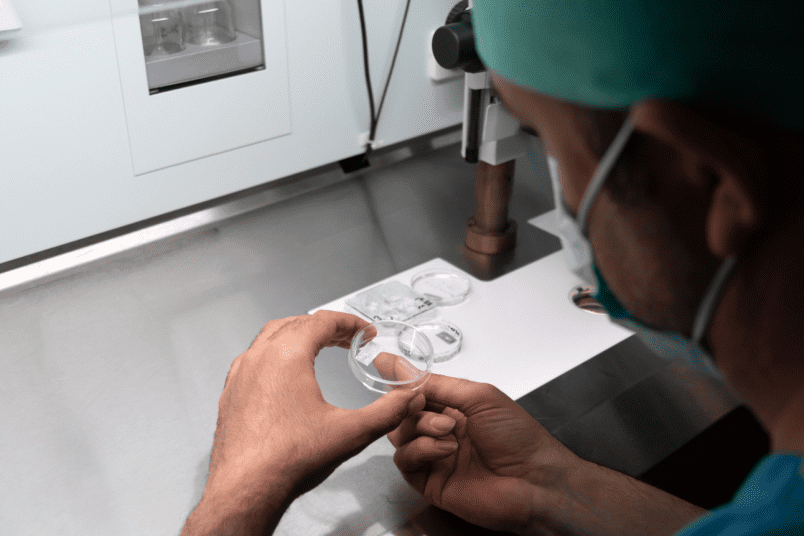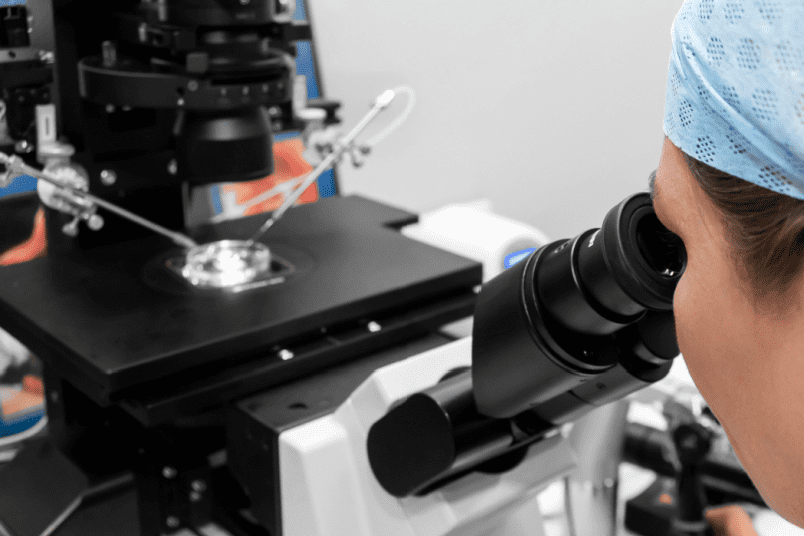Infertility is a fairly known cause that is plaguing marriages and relationship between couples these days. Infertility is the inability to not get pregnant despite having unprotected sex for over a year. There are various treatment options now available to treat infertility, especially assisted reproductive technology (ART). ART includes all kinds of fertility treatments that involves handling of eggs, sperms or embryos outside the human body. An embryologist is a trained professional, who has in depth knowledge of embryology. He/she specializes in handling embryos from the time of egg retrieval right until the embryo is implanted into the woman’s womb for a positive pregnancy outcome.
Responsibilities of an embryologist

An embryologist is a key member of the fertility team who is adept in all the clinical developments in the field of embryology. Embryology is the branch of science related to the study of prenatal development of gametes (eggs and sperms), fertilization of gametes, and development of fetus. The roles and responsibilities of an embryologist are enlisted below:
- Maintaining a conducive laboratory environment for the healthy development of the embryos
- Creating viable embryos for immediate or future use in in-vitro fertilization (IVF)
- Inseminating the eggs to give rise to embryos
- Freezing sperms, eggs, and embryos for future use
- Grading and observing embryo development
- Performing laser biopsies for detecting genetic diseases in embryos
Vaginal rejuvenation techniques

- Determining fertility status of individuals: An important part of an embryologist’s task is to undertake semen analysis testing. This test gives an accurate estimate of a man’s ejaculate and the sperm cells within it. An examination under the microscope will determine sperm motility (ability to swim), sperm morphology (physical shape and structure of the sperm), and sperm count (number of sperms present in an ejaculate). All this information will help in assessing the type of treatment options available for the patients.
- Egg retrieval and processing: During egg collection, fluid is aspirated from the follicles in the ovary, which is then handed over to an embryologist. He/she examines the fluid under a microscope to identify and collect the eggs.
- Insemination: On the same day as egg retrieval, putting together the sperm and the egg, is done by an embryologist. This can be done in a variety of ways, depending on the sperm quality. In traditional IVF technique, a calculated number of prepared sperms are put in a petri dish, containing the patient’s egg and one of the sperms fuses with the egg in order to fertilize it. On the other hand, if intracytoplasmic sperm injection (ICSI) is used to achieve insemination, the embryologist selects a particular sperm that is supposed to be microinjected into the egg.
- Confirmation of fertilization: A day after the sperm has fertilized the egg, the embryologist checks the eggs for evidence of fertilization by examining them under the microscope.
- Monitoring embryo development: The next step taken by the embryologist is to ensure that the fertilized eggs are placed back in a culture medium, with controlled temperature and pH that mimics the environment inside the uterus. At this juncture, the embryologist may sometimes help with assisted hatching during the culture phase. This is done to thin the outer shell of the embryo known as ‘zona pellucida,’ in an attempt to create a “weak” point from where the embryo hatches out, allowing implantation to occur.
- Embryo selection for transfer: On day 5, the embryologist will select the best quality embryo(s) for transfer, using a transfer catheter. The transfer catheter is then handed over to a fertility specialist who will select the exact location to safely place the embryo(s) inside the uterine cavity.
- Preservation of sperms, eggs, and embryos: Excess of created embryos and the sperms and eggs can be preserved for future use by freezing them. For this, the embryologist suspends the embryo (usually at the blastocyst stage) and eggs in a tiny drop of fluid on a specialized tool, which enables rapid freezing. This droplet is lowered onto a metal block that is cooled using liquid nitrogen, where it hardens into a glass-like bead. By doing so, delicate embryo and egg cells do not fracture or shatter due to prevention of ice crystal formation. For freezing the sperms, straws are used, having a different specialized media which prevents it from cryoshock.
- Genetic testing: Embryologists also carry out pre-implantation genetic diagnosis before the embryos are implanted, to find out any chromosomal abnormalities. One of the most common embryo testing methods is embryo biopsy which is done on day 5 or 6 of embryo development. This test involves removal of blastomeres or embryonic cells for genetic profile testing. Only an embryo that shows a normal genetic profile is chosen to be transferred.
- Maintaining the laboratory’s optimal conditions: Having laboratory conditions that are conducive to the growth and development of the embryo is important to maximize pregnancy outcomes. It is the work of the embryologist to carefully maintain the temperature inside the incubators and other equipment used to monitor the embryos.
- Managing sperm and egg banks: Finally, an embryologist is responsible to look after the frozen embryos, eggs, and sperms in a cryostorage tank to ensure they remain viable for future use. These tanks need to be maintained at optimum temperature using liquid nitrogen to ensure the frozen stack remains frozen.
NU Fertility @ NU Hospitals is a ray of hope in the lives of many couples dealing with infertility issues. Known for its team of dedicated fertility specialists, NU Fertility is your best bet if you too are facing problems in conceiving. Visit NU Fertility today and access the best female infertility treatment in Bangalore.
Author: Dr. Sneha J



